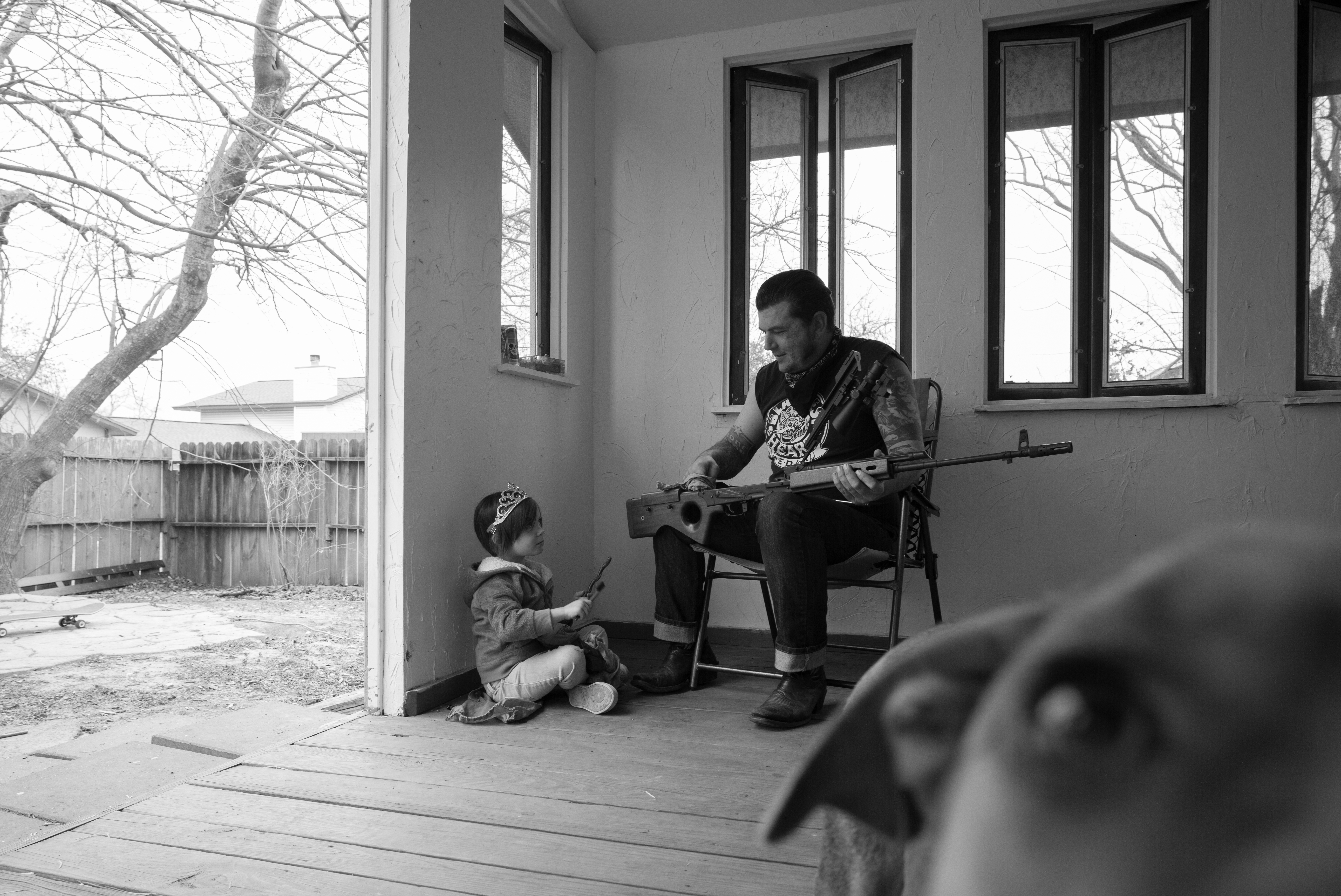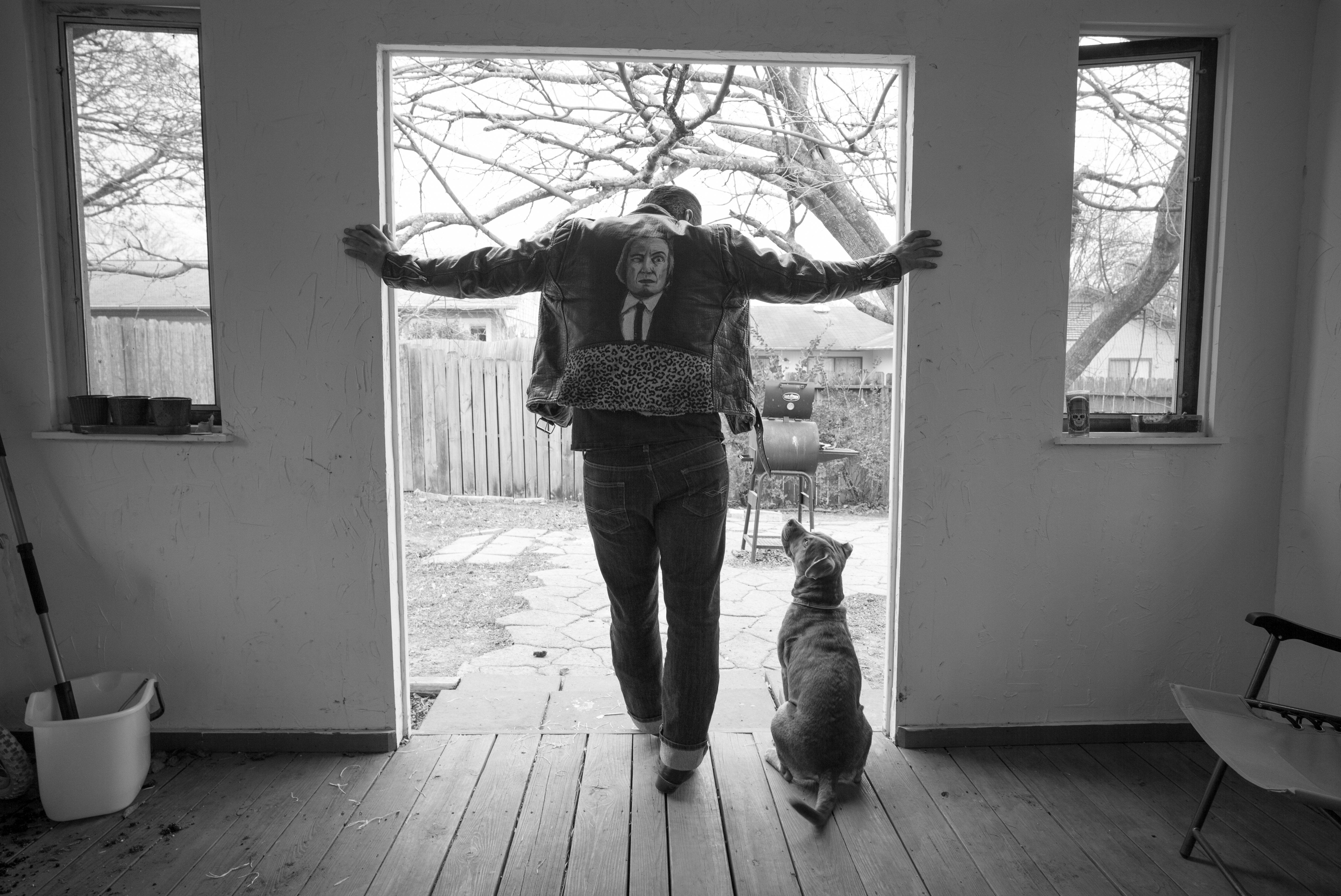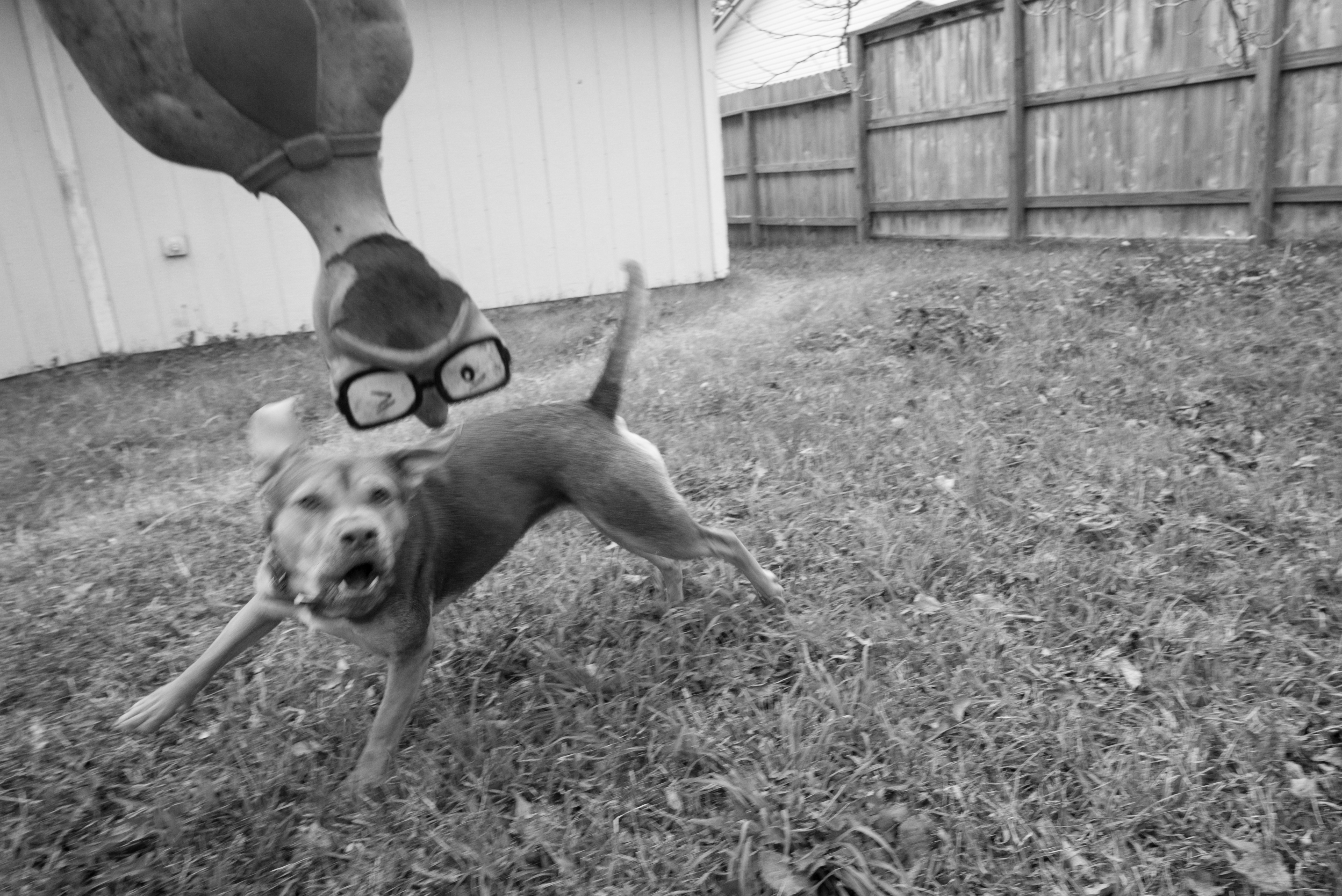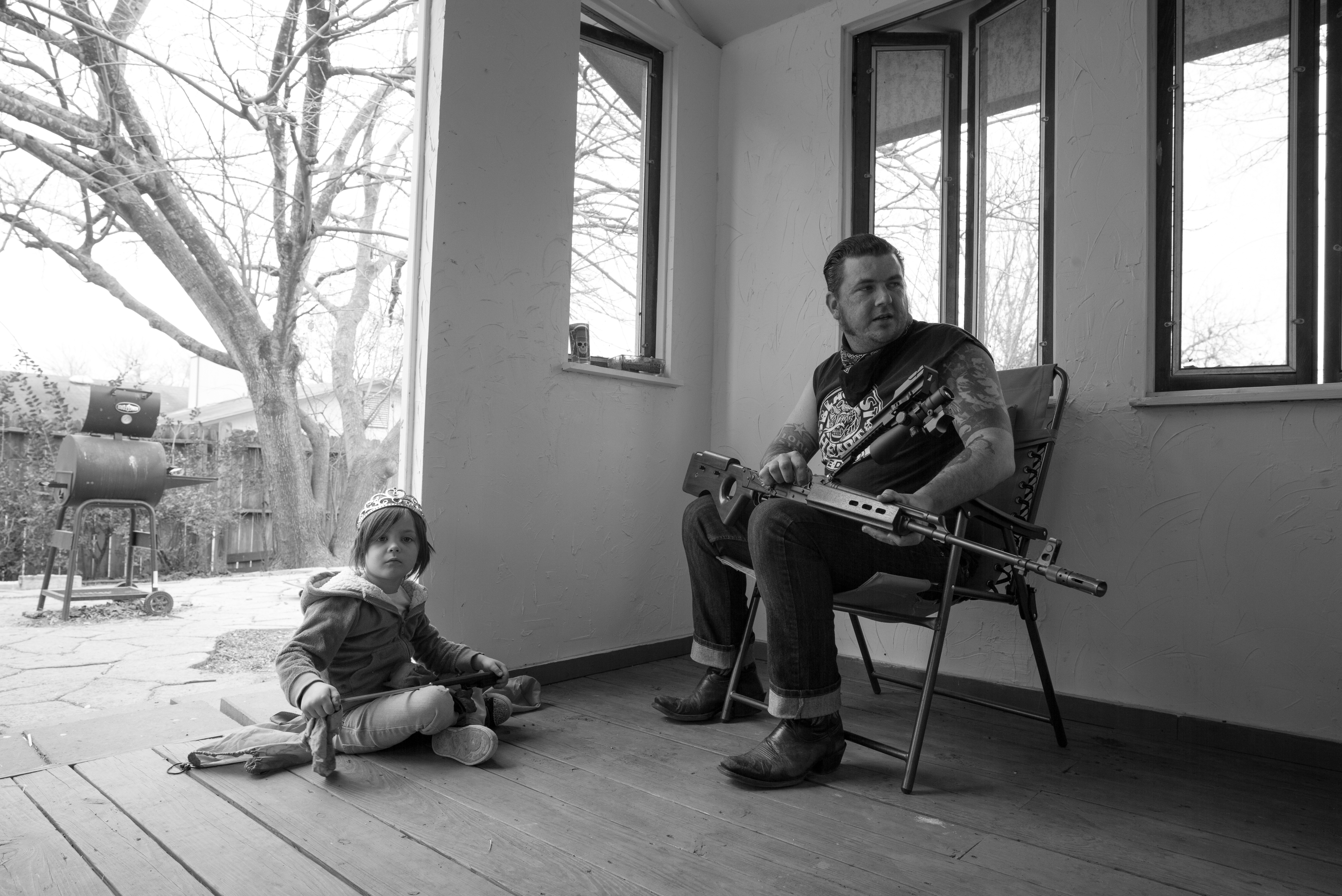You have /5 articles left.
Sign up for a free account or log in.
(See Part 1 here.)
In presidential election week, November 2016, I invited NYC street photographer Donato DiCamillo to Louisiana to have a look at our town for The McNeese Review, a lit mag that prints annually, for which I serve as Editor. He and I set out to meet as many different types of people as we could at a fraught time in our history, to better understand what was happening. (See “Faces of Lake Charles,” Volume 54, 2017, or this adapted version.) Even before that job ended we were discussing future projects, which Donato began to call “American Truths Unwritten.”
Late in 2017 McNeese alum Matt Snow called to say he was back in his beloved Texas. He’d been away for years, fighting our wars, getting his degree, and working a mad variety of jobs around the country. Now he and his family lived in San Antonio, and he wanted to introduce Donato and me to members of motorcycle and car clubs he thought would make striking subjects. He knew skinheads on the north side of the city, where whites and wealth were clustering, and cholos on the south side, where many in the city’s majority Hispanic population lived. He said they came together at rallies and shows, and we could visit them individually and together.
I thought I saw the story: the clubs (there are clubs and there are clubs) were in conflict (tribally, politically, racially, and territorially), and violence was always a possibility. But they came together, sometimes, over bike and car culture, which was almost hopeful: empathy through common love for technology and its aesthetics. Empathy was the theme of this issue.
Matt worked to correct my simplicities. The cholo culture, which he was close to, often cared little about a border wall or Mexican immigration, he said, and many of the guys he knew didn’t speak Spanish. And the “white side” of town was a mix of working-class and wealthy, and “skinhead” meant something other than neo-Nazi, since skinheads emerged from the marriage of white, working-class punks in London with Jamaican rude boys, so they were inherently anti-racist and called neo-Nazi types “boneheads” since they weren’t real “skins”....
It wasn’t that there wasn’t conflict. Matt stomped a Nazi recently in a bar fight and still had the guy’s tooth marks on his fist. (At the start of an interview I did with Matt after we went to Standing Rock with the veterans, he said, “My name is Matt Snow, and I’m too old to be acting this way.”) I just needed to amp up my negative capability.
To complicate things further, working with Donato has forced me to consider what a photographer means when he asks, What’s the story? Donato talks about subjects who can “hold” a look in their eyes, or “show” to reveal who they are; they need to be able to “move” (partly a metaphor for him); and their faces, things, and surroundings must stand for lives lived. Yet even as he shoots some of the most vulnerable people in our society, he insists he’s not political.
I didn’t have a clear sense of what Donato might do with Matt’s offer, but with faith that process would prevail, I picked Donato up at the Houston airport in early January 2018. We drove to Matt’s rented house in San Antonio, where we met another McNeese alum, Dustin Shattuck (MFA ’16), and the four of us began several days of shooting around the city. Some of the best photos came from Matt's place that first afternoon.
***
As a combat veteran, a Texan, and an “Anarcho-Mad-Maxist,” Matt owns and appreciates guns. He showed us his latest, a Dragunov sniper rifle, 7.62 x 54R, designed for the Soviet military. He said when he took it to the range and shot armor-piercing rounds through it, everyone else stopped and looked to see what that was.
His little girl often helps him clean the rifle. “Daddy’s little jigsaw puzzle,” Matt called the Dragunov wryly, as Ella handed him swabs, oil, and brushes. Their pit bull mix, Pearl, adopted in Lake Charles and named for the Texas beer, chased birds, barked under the fence at neighbors’ dogs, and ran in and out of frame.
When he saw photos from this sequence, Matt wrote, “I love how you can get a sense of so many aspects of Ella. Her feralness and fierceness. Her femininity as she understands it. Her inquisitiveness and independence as I understand it. Our defiance. I love her, and I love this photo.”





